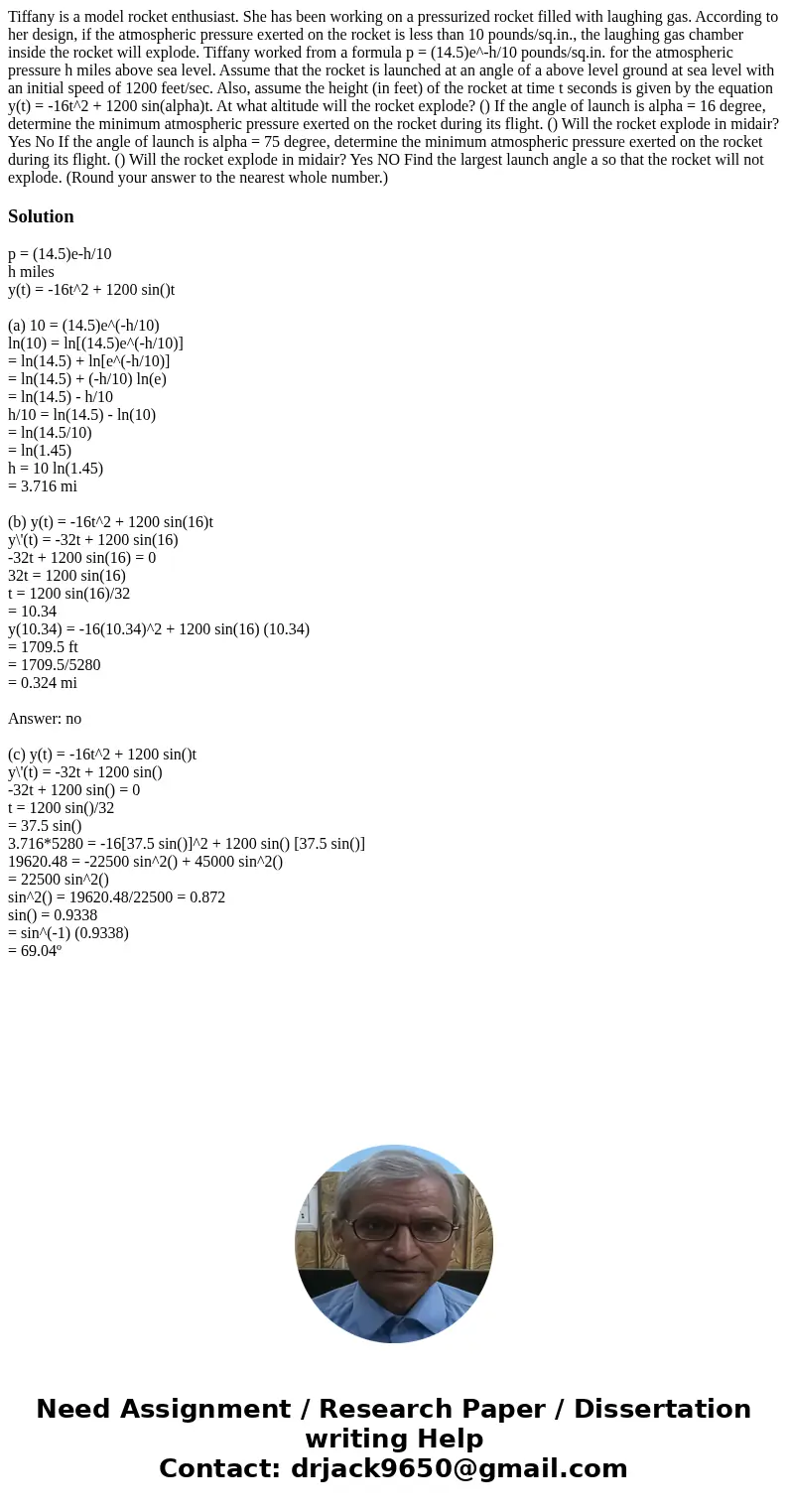Tiffany is a model rocket enthusiast. She has been working on a pressurized rocket filled with laughing gas. According to her design, if the atmospheric pressure exerted on the rocket is less than 10 pounds/sq.in., the laughing gas chamber inside the rocket will explode. Tiffany worked from a formula p = (14.5)e^-h/10 pounds/sq.in. for the atmospheric pressure h miles above sea level. Assume that the rocket is launched at an angle of a above level ground at sea level with an initial speed of 1200 feet/sec. Also, assume the height (in feet) of the rocket at time t seconds is given by the equation y(t) = -16t^2 + 1200 sin(alpha)t. At what altitude will the rocket explode? () If the angle of launch is alpha = 16 degree, determine the minimum atmospheric pressure exerted on the rocket during its flight. () Will the rocket explode in midair? Yes No If the angle of launch is alpha = 75 degree, determine the minimum atmospheric pressure exerted on the rocket during its flight. () Will the rocket explode in midair? Yes NO Find the largest launch angle a so that the rocket will not explode. (Round your answer to the nearest whole number.)
p = (14.5)e-h/10
h miles
y(t) = -16t^2 + 1200 sin()t
(a) 10 = (14.5)e^(-h/10)
ln(10) = ln[(14.5)e^(-h/10)]
= ln(14.5) + ln[e^(-h/10)]
= ln(14.5) + (-h/10) ln(e)
= ln(14.5) - h/10
h/10 = ln(14.5) - ln(10)
= ln(14.5/10)
= ln(1.45)
h = 10 ln(1.45)
= 3.716 mi
(b) y(t) = -16t^2 + 1200 sin(16)t
y\'(t) = -32t + 1200 sin(16)
-32t + 1200 sin(16) = 0
32t = 1200 sin(16)
t = 1200 sin(16)/32
= 10.34
y(10.34) = -16(10.34)^2 + 1200 sin(16) (10.34)
= 1709.5 ft
= 1709.5/5280
= 0.324 mi
Answer: no
(c) y(t) = -16t^2 + 1200 sin()t
y\'(t) = -32t + 1200 sin()
-32t + 1200 sin() = 0
t = 1200 sin()/32
= 37.5 sin()
3.716*5280 = -16[37.5 sin()]^2 + 1200 sin() [37.5 sin()]
19620.48 = -22500 sin^2() + 45000 sin^2()
= 22500 sin^2()
sin^2() = 19620.48/22500 = 0.872
sin() = 0.9338
= sin^(-1) (0.9338)
= 69.04º

 Homework Sourse
Homework Sourse